Multichannel Ecommerce: How to Grow Your Revenue With Multichannel Selling
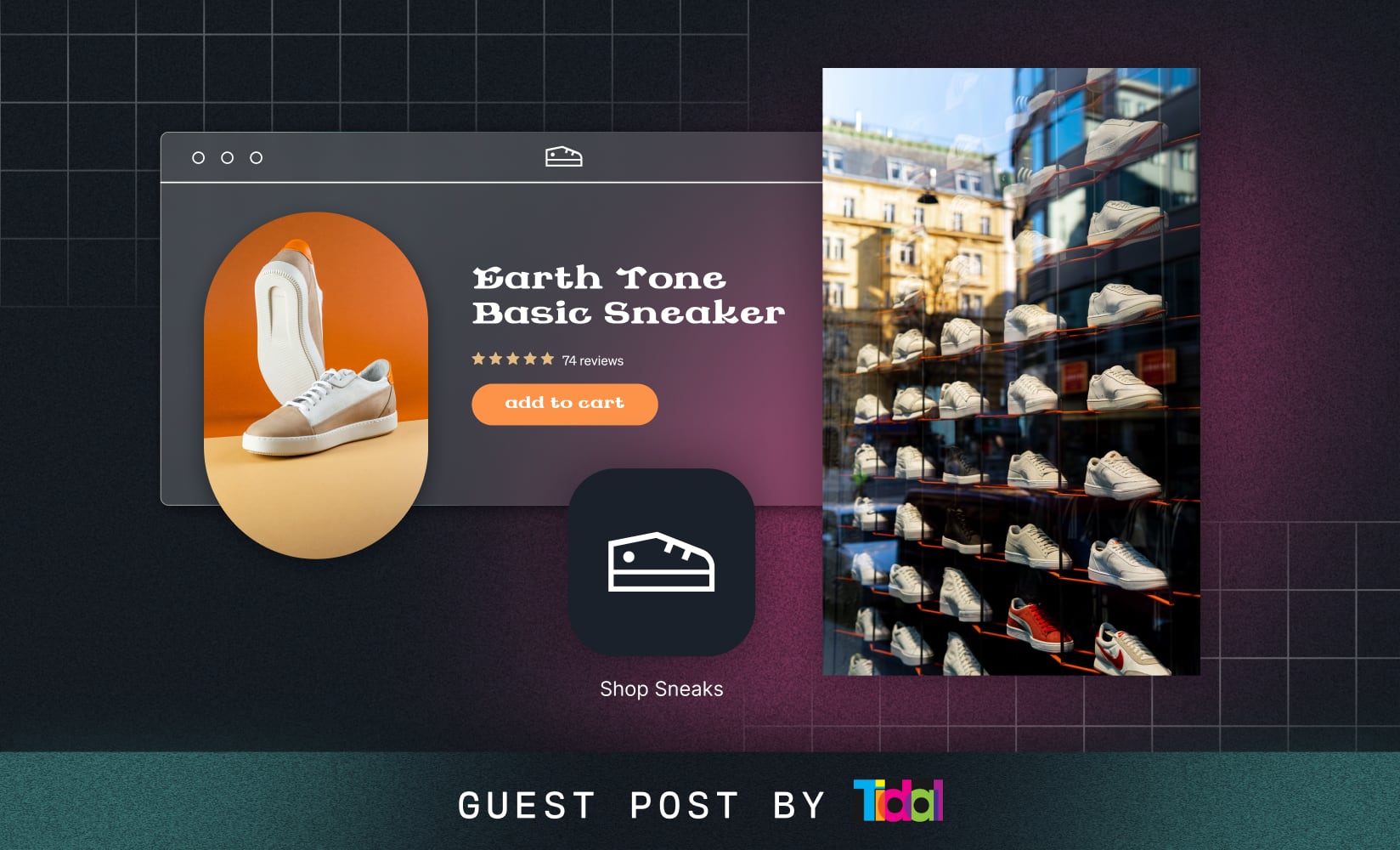
There are many ways to scale your revenue as an online store experiencing rapid growth.
Expanding into new territory online via multichannel selling is one way, and it’s become easier in the last few years with marketplaces like Amazon and Walmart available to you.
But just because you can become a multichannel seller, does this mean you should?
Does a multichannel sales strategy expand your horizons? Or does it hurt your brand equity, diluting your owned online presence or other physical retail channels?
We’ll explore this today, and I’ll share examples of this in the wild, along with some best practices.
But if you are in ecommerce and don’t sell on multiple channels already, this piece is for you! Read on to learn how adopting a multichannel selling strategy could significantly grow your business.
Skip ahead:
- What is multichannel selling?
- How is it different from omnichannel and pure play?
- Multichannel commerce pros and cons
- Best practices for multichannel selling
#cta-visual-pb#<cta-title>Scale content creation across multiple storefronts<cta-title>Designed for larger brands, Shogun Page Builder Advanced enables your team to copy and clone content across your sub-brands and various storefronts with ease.Learn more
What is multichannel selling?
Multichannel selling—as the name suggests—involves using multiple sales channels to communicate, market, and sell to your customers.
These may include a range of physical and digital channels like your own website, social media platforms, online marketplaces, physical stores, craft fairs, pop-up stores, and farmers’ markets where customers can buy your product.
Multichannel also includes the different devices your customers use to interact with your brand, such as smartphones, tablets, computers, smart mirrors, etc.
Another vital thing to note here is that each channel in a multichannel sale strategy stands on its own and is managed separately from one another.
Unlike in omnichannel, there isn’t any intentional overlap or integration between them.
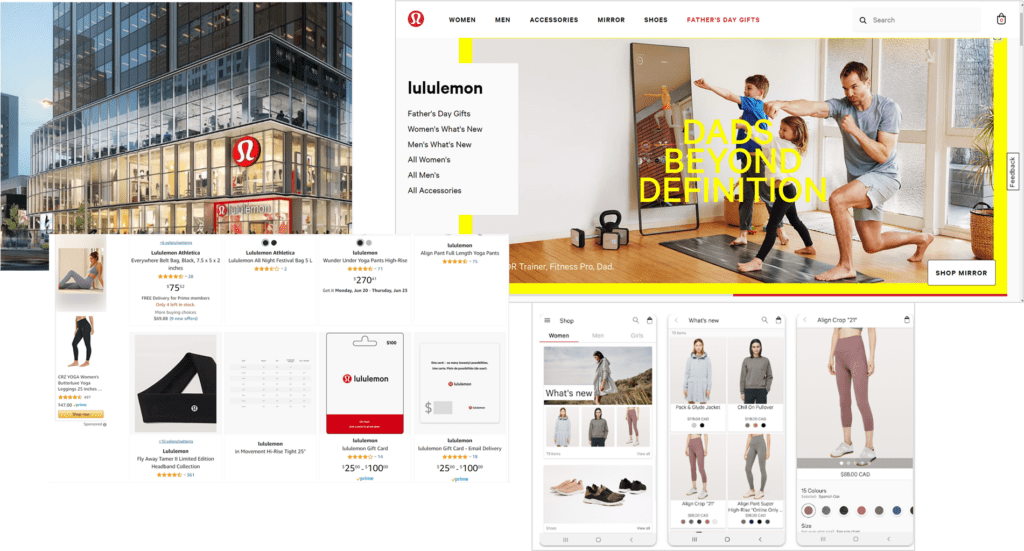
Under Armour, Nordstrom, Lululemon, and Pandora are some examples of brands doing multichannel retailing.
Shoppers can shop products from the brands’ physical or online stores, other online or offline retailers, or marketplaces like Amazon.


Even hardware retail stores like Home Depot are multichannel retailers.
How is multichannel commerce different?
Multichannel commerce is one of three channel strategies in ecommerce. The other two are pure play and omnichannel.
Let’s look at how multichannel differs from these other two strategies.
Multichannel vs pure play
Pure play merchants are focused on selling from a single online or offline channel.
Unlike omnichannel or multichannel retail—where shoppers have more than one channel to interact with—pure play retailers sell on just one channel.
Think of it as the difference between Mono and Stereo.
Most ecommerce brands start with a pure play strategy because of resource constraints, and once they achieve traction, they use multichannel or omnichannel to scale up.
Warby Parker, Casper mattresses, Allbirds, and Tesla, are successful examples of Pure Play commerce.
That is, these brands started by first selling through their online store only and later started adding physical stores and other channels to expand their distribution and reach wider audiences.
However, channel loyalty has become a thing of the past.
Today it is easier to come across multichannel retailers than pure play retailers. You might start out as pure play, but brands typically scale past this point.
Multichannel vs omnichannel
Multichannel and omnichannel selling are often confused as the same thing because they both use various distribution channels.
However, that’s where the similarity ends.
The omnichannel selling approach links each channel to provide a seamless and unified shopping experience across all offline and online touch points.
For example, customers can begin shopping on their mobile and buy in the store or the other way around.
Let’s understand omnichannel with some examples.
The Starbucks’ rewards app enables shoppers to order online in advance or at the store and pay by phone, enjoy in-store refills, or receive customized offers.
Customers can add money to their accounts via smartphone, Starbucks’ website, or at the counter in-store. They can even collect points from each purchase, which can be exchanged for food or drinks.
Any changes are updated in real time across all channels.
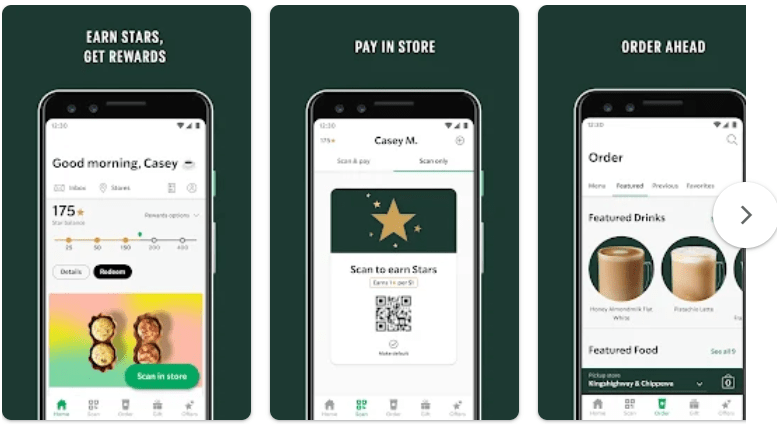
In another omnichannel example, Neiman Marcus invested in enhancing the integration between online and in-person shopping experiences.
The retailers’ website uses geolocation to track visitors’ locations and point them individually to local events or sales happenings in their region.
The website remembers preferences—like the clothing size a shopper usually searches for—and uses that info to direct users to items available in their size at a nearby store.
This omnichannel strategy allows Neiman Marcus to capture data and make highly relevant and individualized recommendations that drive sales. And it won Neiman Marcus the coveted IRT Retailer Innovation Award.
While omnichannel selling is the holy grail in commerce, it is best suited for large, sophisticated, well-resourced brands.
Ultimately, similar to omnichannel, customers shopping at a multichannel retailer interact with the brand across different channels, but with multichannel, each experience is unique and separate.
Each channel in a multichannel operation works independently from the other, so the shoppers’ journey starts and ends on a single channel.
#cta-visual-pb#<cta-title>Scale content creation across multiple storefronts<cta-title>Designed for larger brands, Shogun Page Builder Advanced enables your team to copy and clone content across your sub-brands and various storefronts with ease.Learn more
Benefits of multichannel ecommerce selling
If you’re thinking about opening up multiple channels, that’s great! Here are just a few of the advantages of becoming a multichannel seller you might expect:
Increase your revenue
This benefit is obvious but worth noting.
When your products are available on more than one channel, you widen your reach by getting in front of more shoppers where they are and where they like to shop, which increases sales.
On average, multichannel marketing and selling have been seen to increase revenue by 38%, 120%, and 190% with each additional channel.
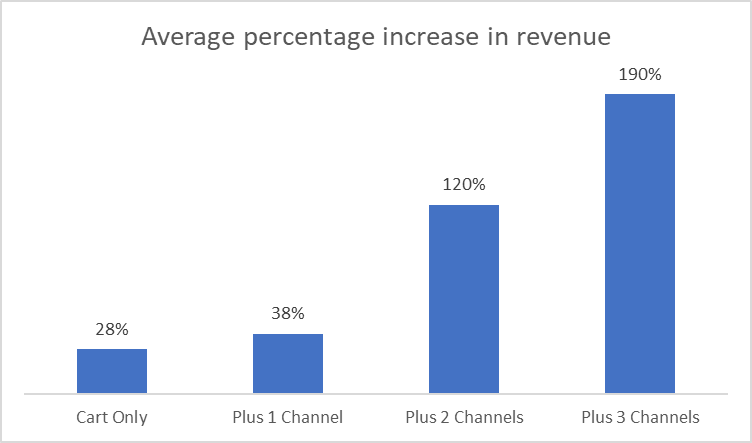
Additionally, as per SAP’s survey, 74% of the company respondents experienced increased sales from multichannel selling.
Further, 64% increased consumer loyalty/acquisition, and 57% have improved customer experience.
Diversify your sales
Selling on a single channel can be risky.
Changes in shopping behavior, loss of momentum of physical stores, or loss of site traffic due to changes in search algorithms could all negatively impact revenue.
A multichannel selling strategy protects you from relying on just one sales method.
Gain stronger brand awareness
There is usually some overlap of visitors between channels. And customers typically use multiple channels to learn about a business or make a purchase.
A McKinsey research study shows that over 50% of customers engage with three to five channels before making a purchase or resolving a request.
In fact, an average customer attempting to book a single reservation for accommodations online switched nearly six times between websites and mobile channels.
A shopper may learn about your brand on Facebook, be retargeted with your ads, and see you several times in their feed, all before completing a purchase through your ecommerce site or a marketplace, for example.
When visitors see and engage with your product on multiple channels, it enhances product visibility and brand recognition.
Strong brand awareness organically increases sales, which reduces reliance on paid promotions.
Retailer CUPSHE is a great example of leveraging brand awareness benefits as a multichannel seller.

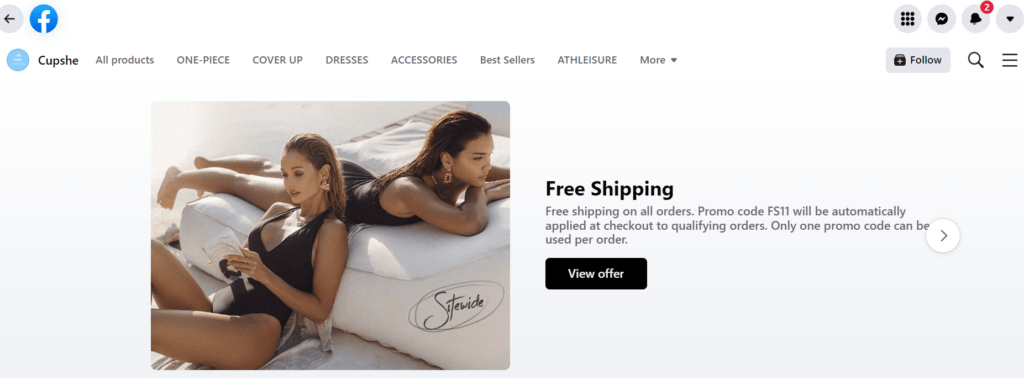
They retail on Amazon, use Facebook’s selling features, advertise on Instagram, and use several touchpoints ahead of customers interacting on their owned ecommerce website.


By doing this, CUPSHE gets in front of their audience in multiple ways and stays on shoppers’ minds.
Target customer segments with a tailored approach
Every channel has some uniqueness in the customer segment it tends to attract.
For example, your audience on Etsy may be different from a demographic or psychographic perspective from your shoppers on Amazon or your physical store.
Multichannel selling helps you tailor your approach to different customer segments by adjusting each channel’s marketing mix.
For example, tweaking your messaging, product mix, and pricing by channel helps you customize the experience, leading to more sales.
#cta-visual-pb#<cta-title>Scale content creation across multiple storefronts<cta-title>Designed for larger brands, Shogun Page Builder Advanced enables your team to copy and clone content across your sub-brands and various storefronts with ease.Learn more
Disadvantages of multichannel ecommerce selling
Now that we’ve covered the pros of becoming a multichannel seller, let’s go over the potential downsides.
While every channel you add to your mix will add some complexity, each of the challenges below can be managed if you plan for them.
Inventory planning & management
Every channel has unique quirks and customer segments with different preferences and shopping behavior.
Therefore, selling on multiple channels can make forecasting demand by channel and across geographies and periods tricky.
This can lead to inventory management problems like overstocking and overselling.
However, there are plenty of inventory management software options available to alleviate inventory shocks.
Potential cash flow shocks
It’s important to consider that each sales channel available to you has its unique payment, refund, and return policies.
For example, some marketplaces pay the merchant as soon as an item is sold; others pay every two weeks or monthly.
Together with refunds and returns across multiple platforms, this can complicate cash flow management. However, this can be managed with robust budgeting and monitoring.
Inconsistent customer support & brand experience
Customers expect a consistent brand experience, irrespective of which channel they use to make a purchase.
You have more control over the brand experience on your website and your physical store, but it is tougher to control brand experience on third-party channels and marketplaces like Amazon, Walmart or Etsy, etc.
A single negative comment or low star rating can impact your reputation across all your sales channels.
It’s often hard to keep track of all the channels running at one time once you begin multichannel sales, so naturally, keeping track of customer reviews and customer service support instances can become challenging to scale as you expand.
Multichannel commerce best practices to grow your sales
Okay, so if you’re sold on the benefits of multichannel selling, how should you best get started? Here are some best practices we recommend:
1. Go slow and steady
Start with pure play selling (single channel) first if you are a new merchant.
Then, integrate other channels once you have gained traction and resolved customer experience and inventory issues on the current channel.
2. Select your channels strategically
Before adding a channel, consider the shopping behavior of your potential customers, the category fit with the platform, and the geography you wish to target.
3. Avoid a one-size-fits-all approach
Every channel attracts different customer types, so you should recalibrate your marketing mix by channel to customize the experience.
This could include your merchandising, messaging, pricing, fulfillment, and returns strategy.
4. Be as consistent as possible with your brand experience
Again, shoppers expect the same brand experience across all channels.
Their expectations are tied to the brand, not the channel; so it’s vital to maintain a consistent and cohesive brand experience across all your sales channels.
5. Use smart analytics software to monitor performance
As someone who manages multiple sales channels, you know firsthand the challenges of keeping track of your accounting and understanding the financial status of your business.
It can be overwhelming to constantly switch between different apps and try to consolidate your data across all platforms.
However, you can simplify this process by using automated analytics software like Synder Business Insights.
Comprehensive analytics tools like this can seamlessly connect all your sales and payment platforms and generate customizable KPI reports that cover your sales, product, and customer performance, all displayed on a single dashboard.
With real-time insights into key ecommerce metrics, you can identify growth opportunities, streamline decision-making processes, and adjust strategies to increase revenue.
Get the most out of multichannel selling
Selling on multiple channels adds a significant degree of complexity, it is resource intensive, and it requires agility and flexibility to manage them all.
The good news is there are tools available to help you merchandise and provide a cohesive customer experience across all channels without duplicating effort.
A powerful page builder is one tool that affords you design flexibility and simplifies the creation of better ecommerce experiences—especially for your owned-ecommerce channel (the one you need the most control of!).
No wonder multichannel brands are turning to Shogun Page Builder Advanced to improve how they manage and optimize their online storefronts.
Overall, there are many ways to scale your revenue as an online store experiencing rapid growth.
Expanding into new territory online via multichannel selling is one way, and it’s become more accessible in the last few years with marketplaces and channels.
So don’t miss out! Try out some of the best practices we shared here today!
#cta-visual-pb#<cta-title>Scale content creation across multiple storefronts<cta-title>Designed for larger brands, Shogun Page Builder Advanced enables your team to copy and clone content across your sub-brands and various storefronts with ease.Learn more
Aziz Memon
Aziz is Partner & Chief Marketing Officer at Tidal Commerce. Aziz helps clients recalibrate strategy, enhance customer experience and optimize conversion. As a certified management consultant, Aziz has worked globally helping B2B&C marketers understand their customers, build brands, generate leads, improve customer experience, and achieve topline targets across diverse sectors. Tidal Commerce is an ecommerce engineering firm, and a Shopify Plus and Shogun agency partner.



